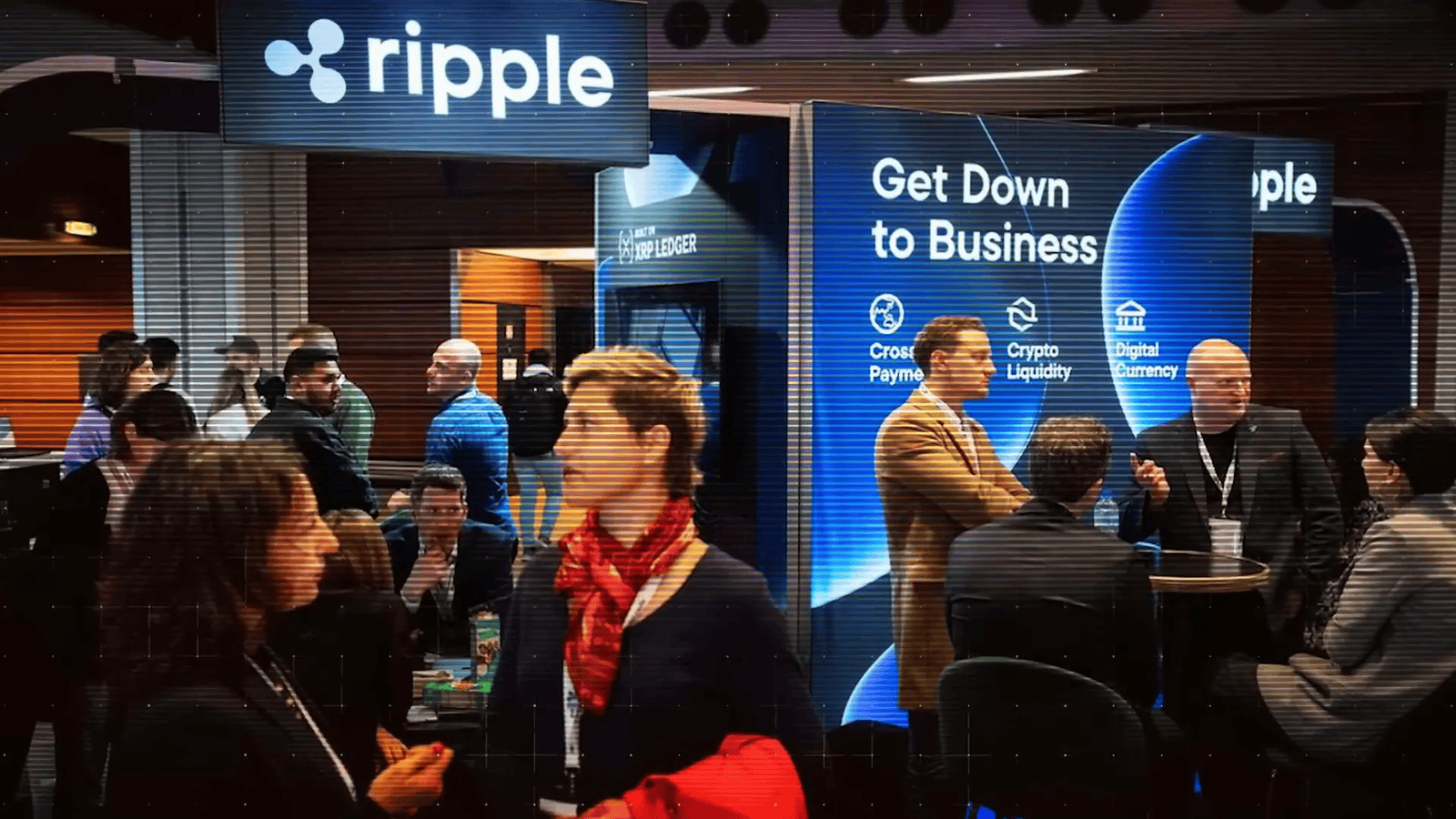Blockchain interoperability is a crucial aspect of the evolving blockchain landscape, enabling different networks to communicate and collaborate effectively. In this blog, we will explore how Axelar’s innovative approach facilitates seamless integration with the XRP Ledger and other blockchain ecosystems, unlocking new possibilities for developers and businesses alike.
Table of Contents
- Introduction to Axelar and XRP Ledger
- Key Components of Interoperability Platforms
- The Role of Relayers and Verifiers
- Message Flow in the Axel Protocol
- Verification Methods in Cross-Chain Messaging
- The Importance of Modular Verification
- Integration Requirements for XRPL
- The XRP Ledger Integration Process
- Handling Verifier Availability and Trust
- Preventing Spam in Message Relay
- Conclusion and Future Prospects
- FAQ
Introduction to Axelar and XRP Ledger
Axelar is transforming the landscape of blockchain interoperability. As a web-based platform, it connects various blockchain networks, allowing them to communicate seamlessly. The integration with the XRP Ledger is particularly noteworthy, as it opens up new avenues for both developers and users.
What is Axelar?
At its core, Axelar is a proof-of-stake blockchain that operates as a layer one solution within the Cosmos ecosystem. This innovative platform serves as a hub connecting multiple blockchains, enabling secure message passing between them. Unlike traditional token bridges, Axelar allows for the transmission of generic messages, expanding its functionality beyond simple token transfers.

With over 60 connected chains, Axelar facilitates communication between diverse blockchain networks, including Ethereum, Polygon, and Avalanche. This extensive connectivity empowers users to interact across various ecosystems without the limitations of pairwise bridges.
Understanding Blockchain Interoperability
Blockchain interoperability refers to the ability of different blockchain networks to communicate and share information. This is crucial for the ecosystem’s growth, as it allows for the movement of assets and data across chains. Axelar’s model enhances this interoperability, enabling a more integrated and fluid blockchain ecosystem.
Interoperability eliminates the silos that often exist between blockchain networks. As users increasingly engage with multiple chains, the demand for solutions that facilitate seamless interaction grows. Axelar addresses this need, providing a robust framework for cross-chain communication.
The Hub and Spoke Model
The hub and spoke model is a foundational element of Axelar’s architecture. Instead of relying on multiple pairwise connections, Axelar acts as a central hub. This design not only simplifies the integration process but also enhances scalability.
As new chains are added to the Axelar network, they automatically gain access to all existing connections. This means that when the XRP Ledger integrates with Axelar, it can communicate with numerous other chains without needing individual bridges for each one. This scalability is a significant advancement over traditional methods.
Why Cross-Chain Communication Matters
Cross-chain communication is vital for several reasons. Firstly, it allows users to retain custody of their tokens during transactions. This is particularly important in a landscape where centralized exchanges often impose high fees and custody risks.
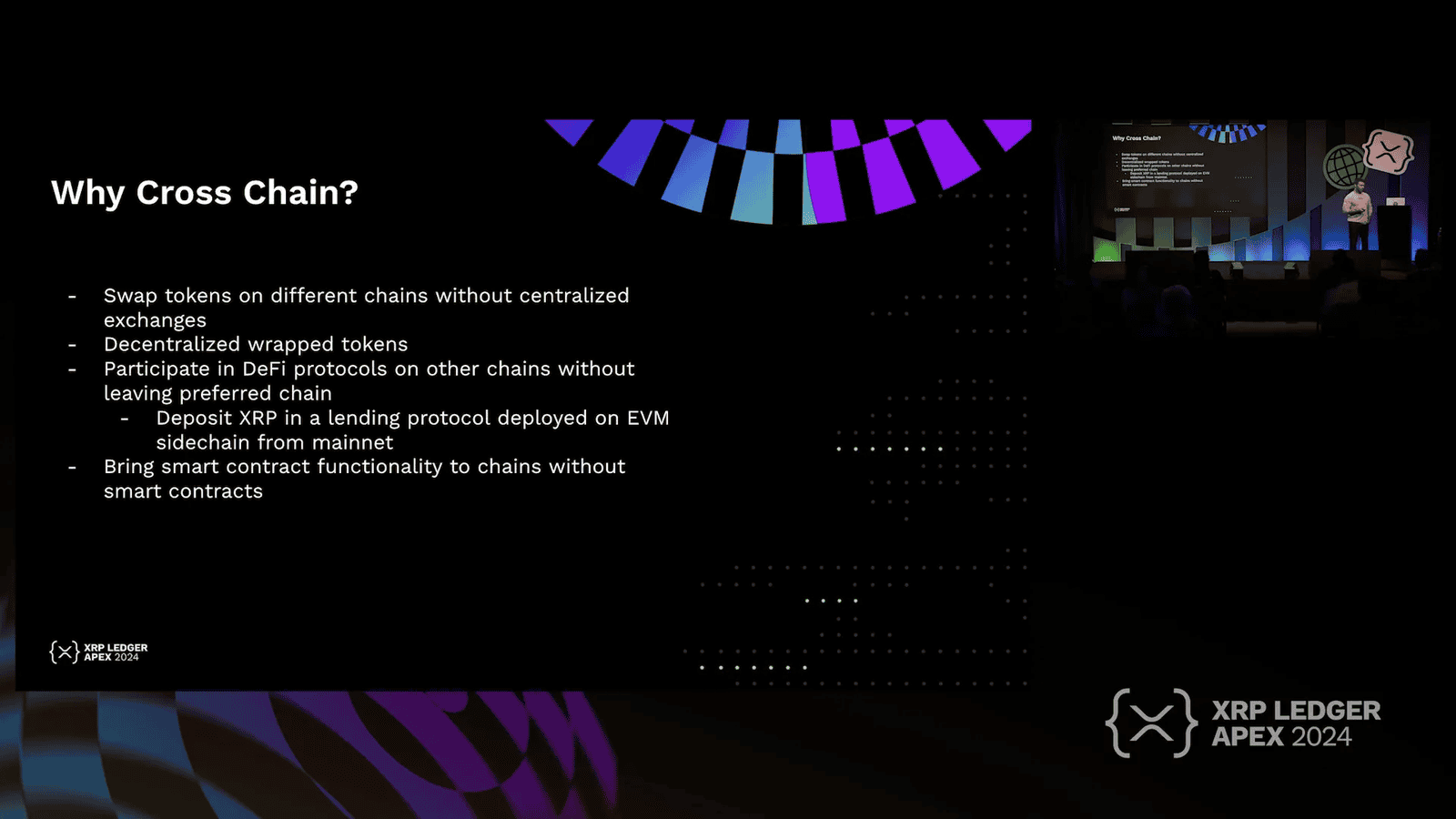
Moreover, cross-chain capabilities enable users to execute smart contracts on remote chains without needing a wallet or account on those chains. For example, a user on the XRP Ledger can interact with a smart contract on Ethereum, executing complex transactions without leaving their preferred blockchain.
Introducing the Interchain Amplifier
The Interchain Amplifier represents the next evolution of the Axelar protocol. While the original protocol primarily focused on bridging EVM and Cosmos chains, the Interchain Amplifier expands its capabilities to integrate with any type of blockchain. This evolution is crucial for fostering a more inclusive blockchain environment.

This new protocol is designed to be modular and programmable, allowing developers to customize how messages are verified and secured. This adaptability is essential as blockchain technology continues to evolve, enabling Axelar to stay at the forefront of interoperability solutions.
Key Components of Interoperability Platforms
Interoperability platforms are built on several essential components that enable seamless communication between different blockchain networks. Understanding these components is crucial for grasping how blockchain interoperability functions effectively.
1. The Relayer
The relayer is a permissionless component responsible for passing messages between chains. It ensures that blockchains can communicate with each other, providing a layer of liveness. However, the relayer does not guarantee correctness; it merely facilitates the transmission of messages, which must be verified by other entities.
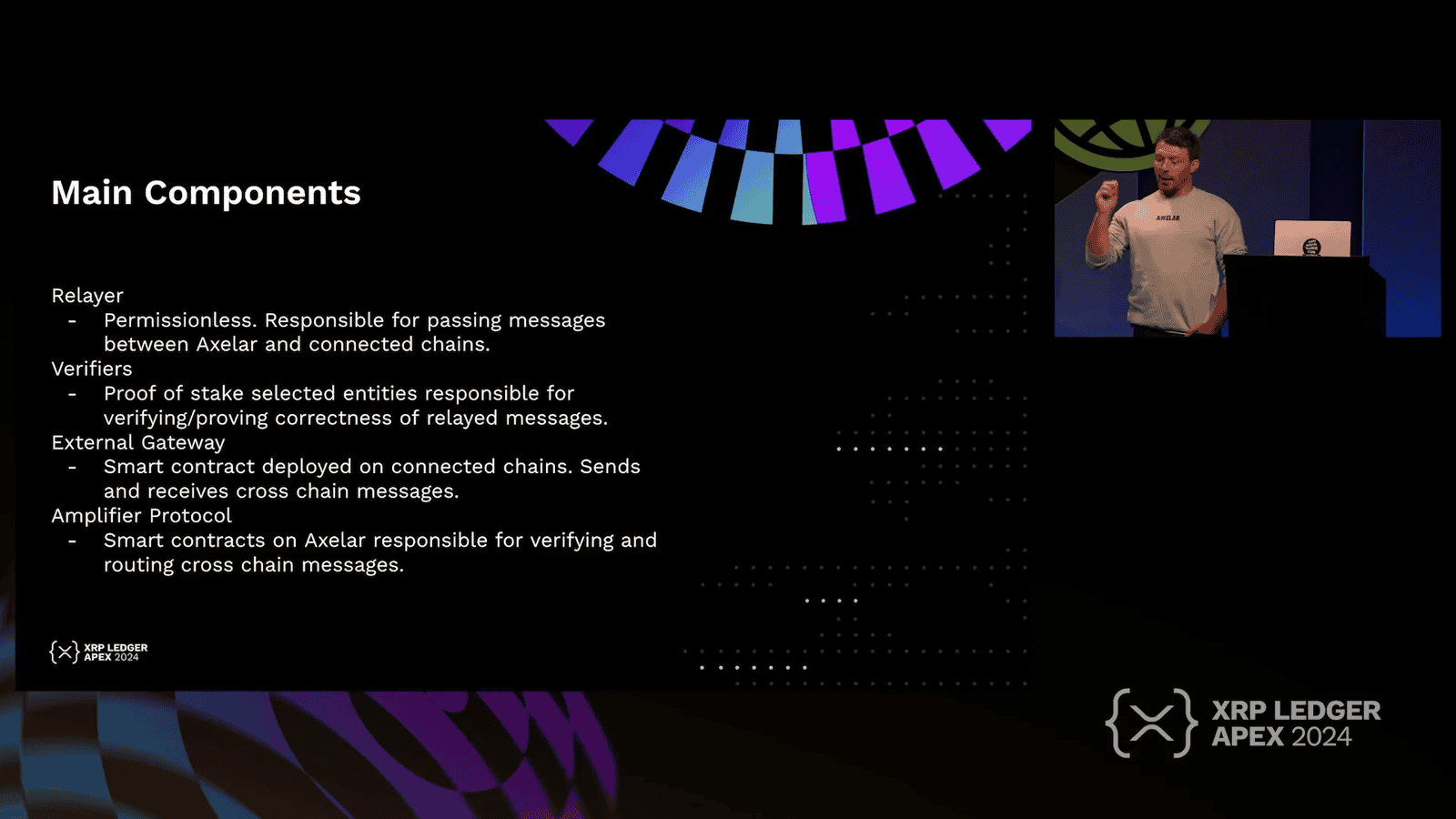
2. Verifiers
Verifiers are off-chain entities that attest to the correctness of cross-chain messages. They play a critical role in ensuring that the messages relayed are accurate and trustworthy. Typically, verifiers operate under a proof-of-stake model and are selected through governance votes. Their primary function is to validate the information being passed through the network.
3. External Gateway
The external gateway serves as the entry point to the protocol on each connected blockchain. This component allows users and decentralised applications (dApps) to send and receive messages across the Axelar network. Every blockchain connected to Axelar has an associated smart contract or mechanism that interacts with the external gateway, ensuring a smooth flow of information.
4. Smart Contracts on Axelar
Axelar has a series of smart contracts responsible for routing messages. These contracts determine the destination of messages, verify their format, and manage the overall message flow within the network. They act as a bridge between the external gateways and the Axelar ecosystem, ensuring messages are correctly processed.
The Role of Relayers and Verifiers
The interaction between relayers and verifiers is fundamental to the integrity of cross-chain messaging. Relayers facilitate the transmission of messages, while verifiers ensure their accuracy. This collaboration is essential for maintaining security and trust within the interoperable blockchain environment.
How Relayers Operate
When an application on a source chain sends a message, the relayer picks up the event and transforms it into a message format suitable for the Axelar network. This message includes the source chain details, destination chain, and payload. The relayer operates without trust, meaning anyone can act as a relayer, ensuring decentralisation.
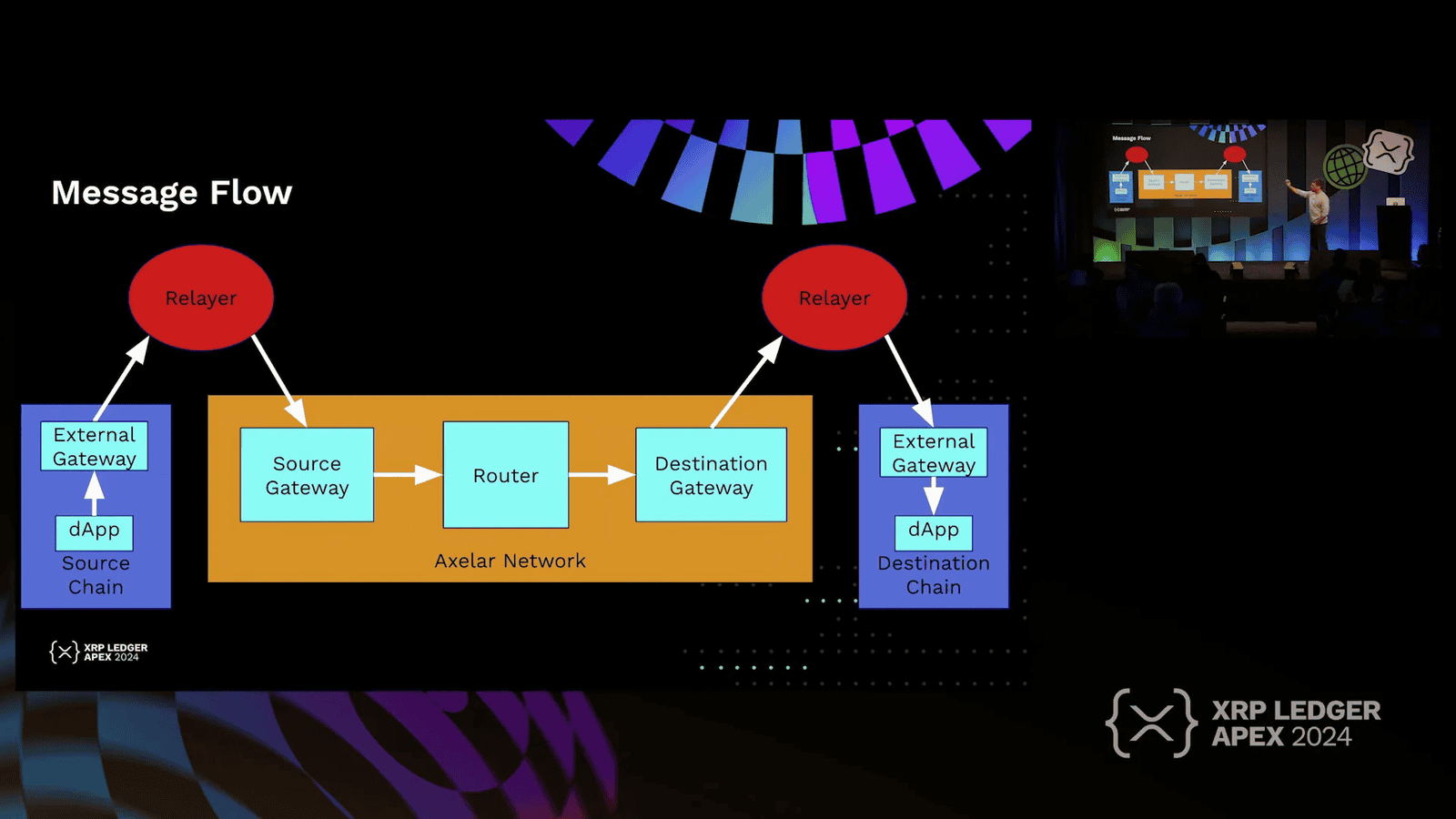
Verification Process
Once a message is sent, it requires verification before being routed. This verification involves checking the message’s validity against the source chain. Off-chain verifiers then vote on the message’s correctness. A message must achieve a quorum, typically around 80-90%, to be considered valid and routed to its destination.
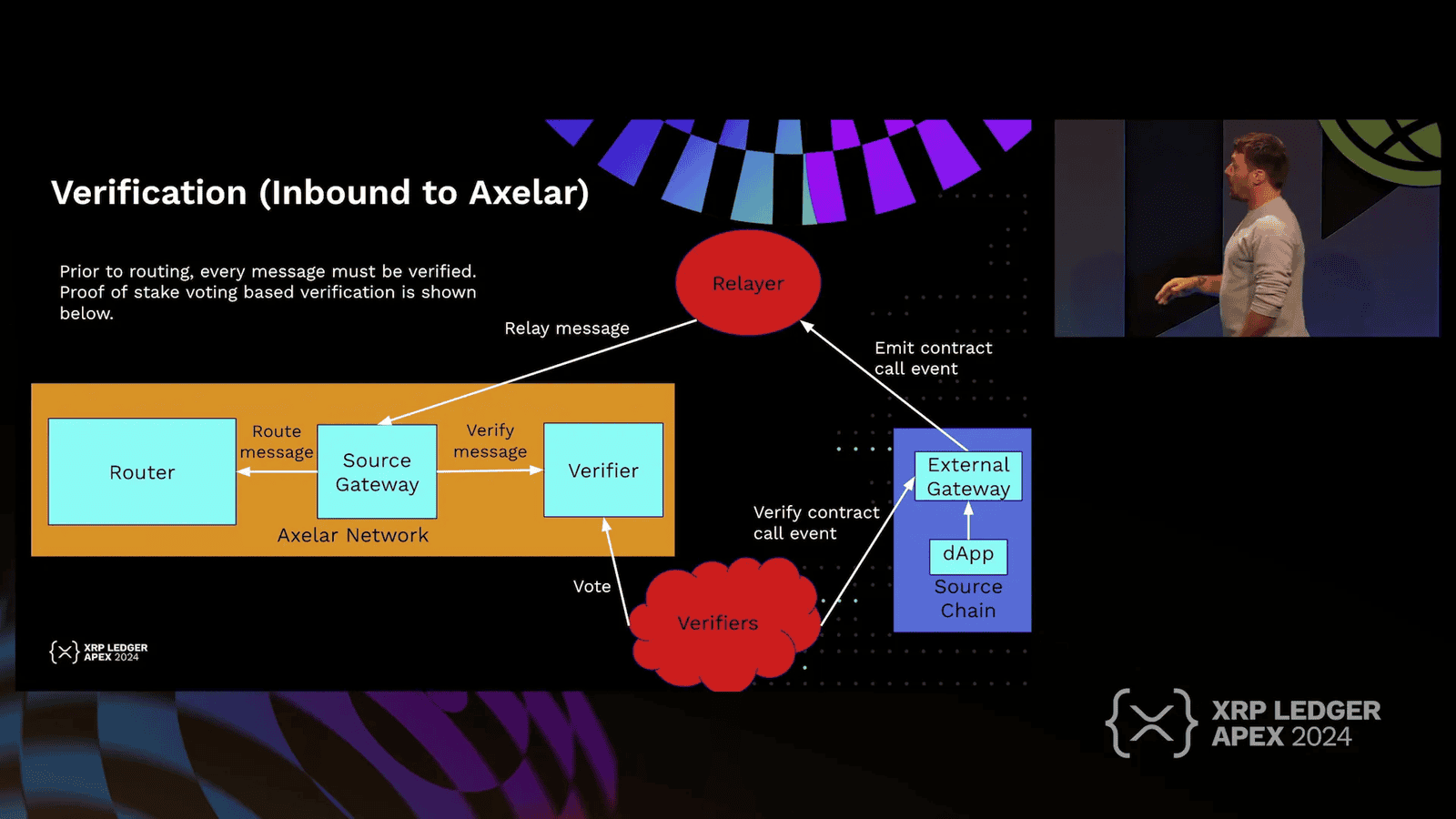
Message Flow in the Axel Protocol
The message flow within the Axel protocol is a structured process that ensures messages are accurately sent and received across different blockchain networks. This flow can be broken down into several key steps.
1. Sending a Message
To send a message, a user specifies the target chain, the contract on that chain, and the payload. This payload can consist of arbitrary data, which is then serialized into bytes for transmission. The relayer listens for this event and processes the message accordingly.
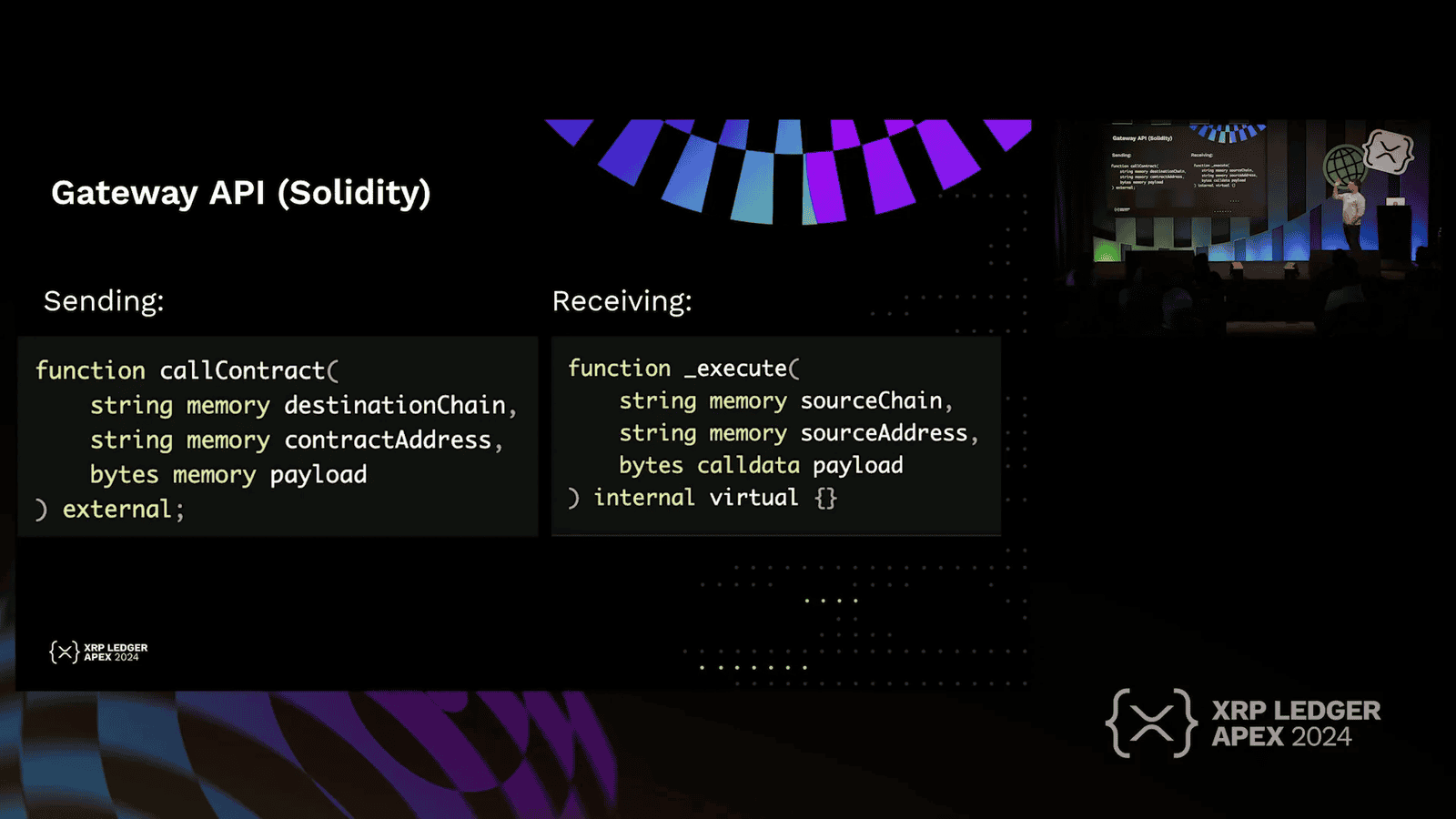
2. Verification and Routing
After the relayer processes the message, it is sent to the gateway where verifiers check its validity. The verifiers assess whether the message matches the details provided by the relayer. If the message passes verification, it is routed to the appropriate destination chain through the router.
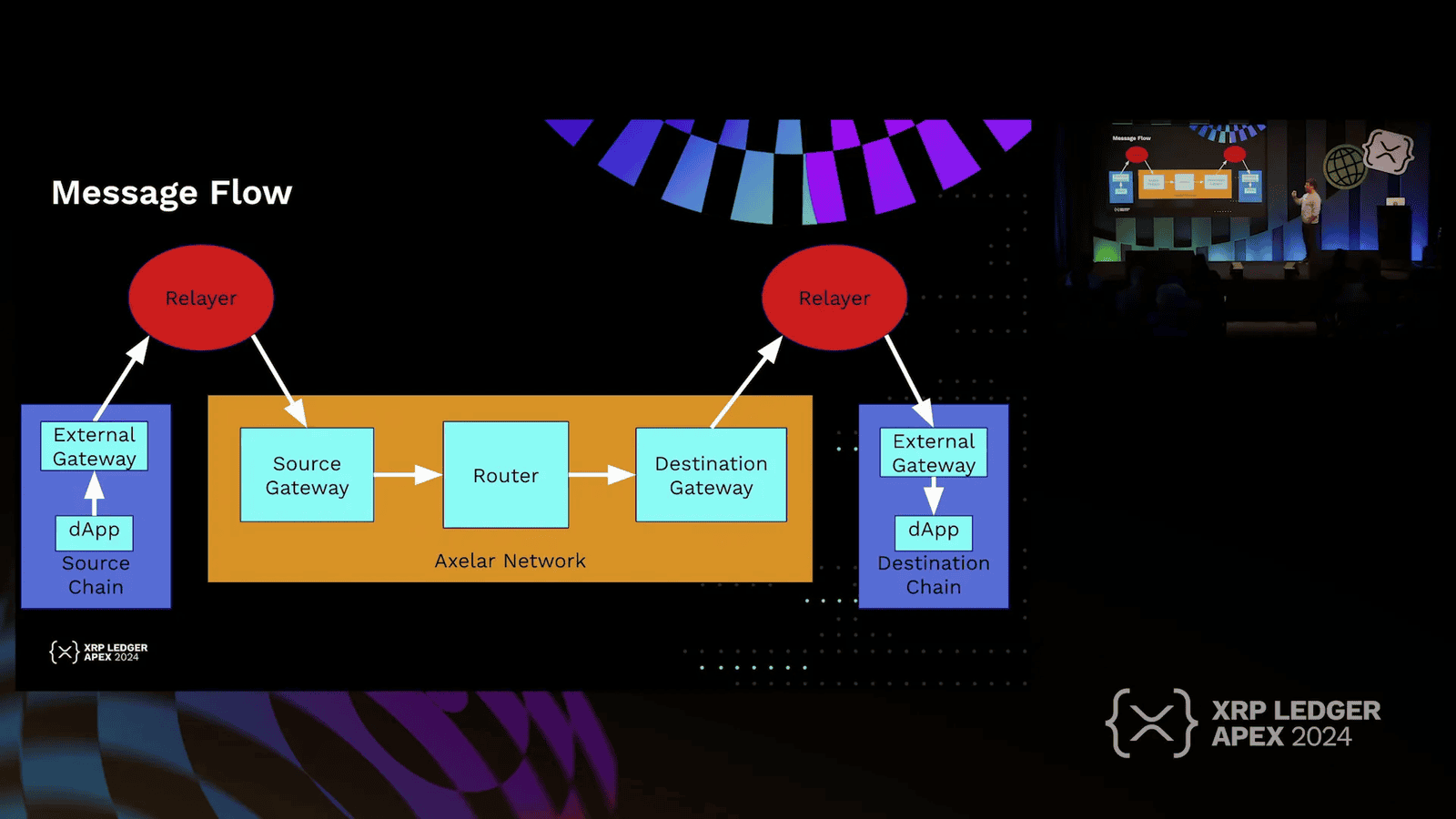
3. Receiving a Message
Once the message reaches its destination, the receiving application deserializes the payload, converting it back into its original structure. This ensures that the application can accurately process the information received. The entire process is designed to prevent replay attacks, ensuring messages are unique and secure.
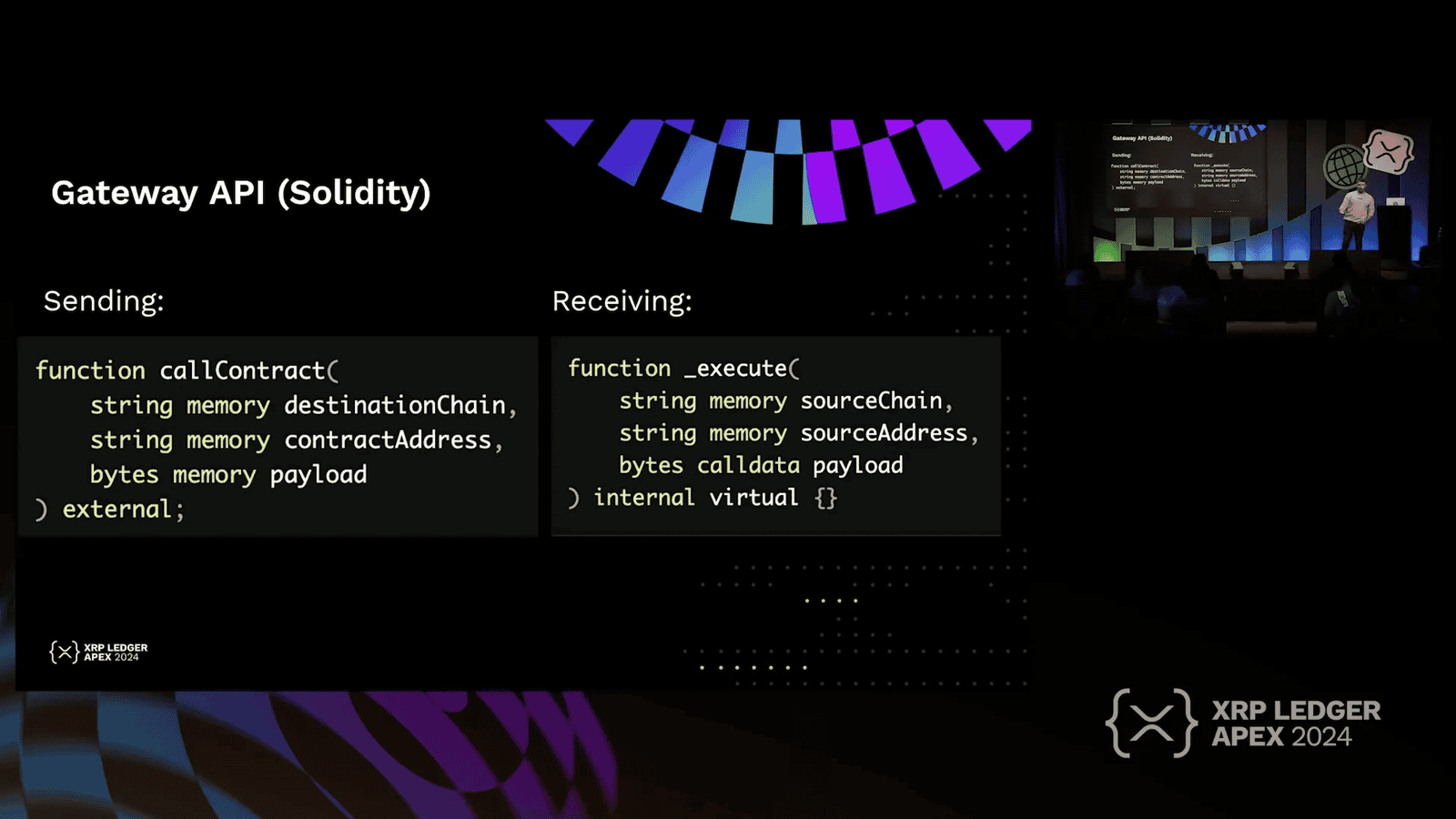
Verification Methods in Cross-Chain Messaging
Verification is a vital component of cross-chain messaging, as it ensures the security and correctness of the transmitted data. Axel supports various verification methods, allowing flexibility and adaptability for different blockchain integrations.
Voting Verification
Voting verification is a common method employed by Axelar, where off-chain verifiers assess the message’s validity. They compare the message details with the source chain’s records and cast votes. A message is only routed once it achieves the necessary quorum.

Light Client Verification
Light client verification allows smart contracts on one chain to verify events on another chain by checking validator signatures. This method can be used to confirm that a specific transaction occurred without needing the entire blockchain’s data. It is a lightweight and efficient approach to verification.

Modular Verification
The modularity of the verification methods means that developers can choose the most appropriate verification strategy for their specific use case. This flexibility allows for upgrades and changes as new methods are developed or existing ones are improved.
The Importance of Modular Verification
Modular verification is a significant feature of the Axelar protocol, allowing custom verification methods to be implemented based on the specific requirements of each blockchain. This adaptability enhances security and efficiency in cross-chain transactions.
Custom Implementations
Developers can create bespoke verification methods tailored to their blockchain’s unique characteristics. This capability enables projects to address their specific security needs while maintaining compatibility with the Axelar network.
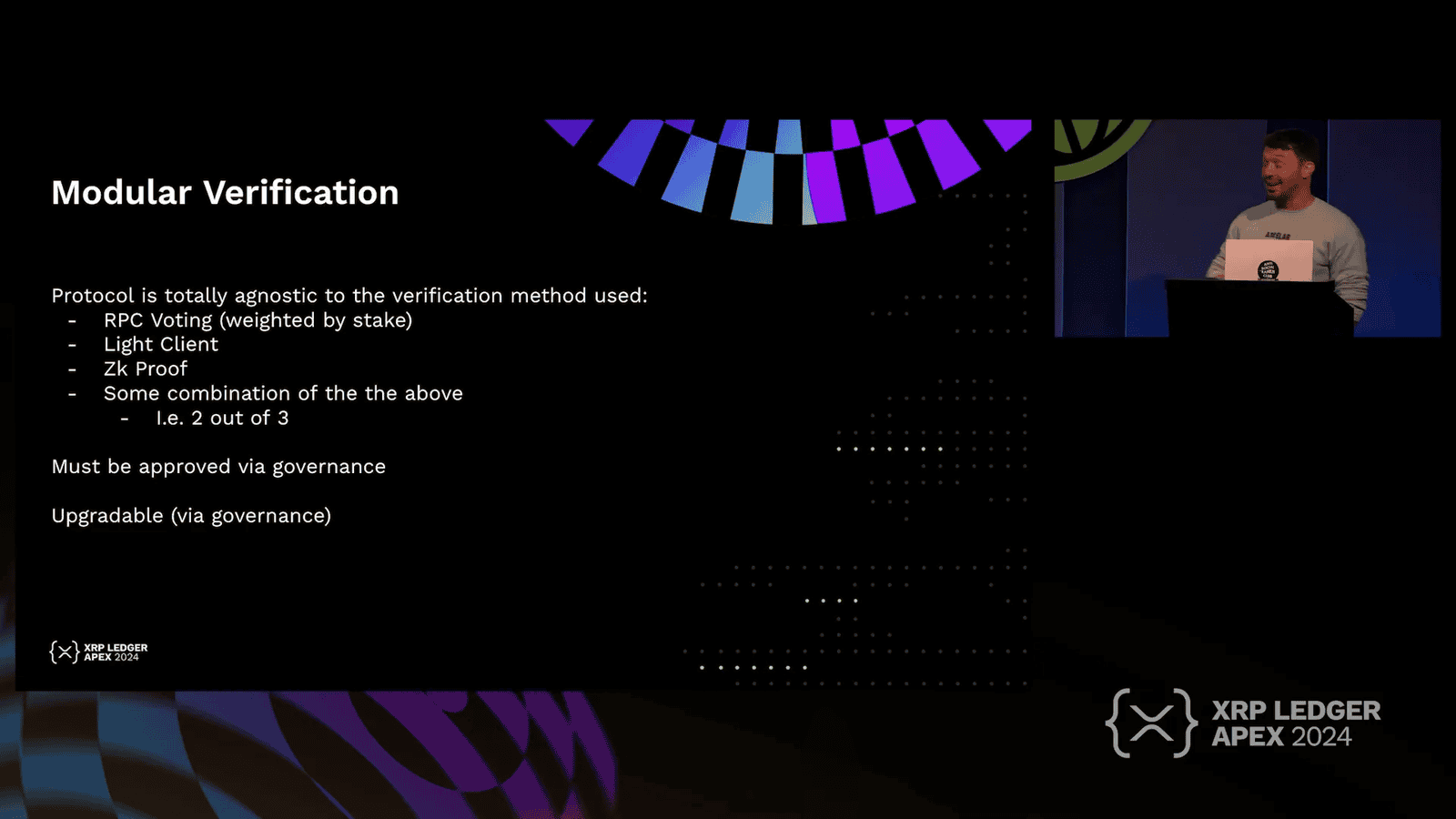
Upgradable Verification Methods
Verification methods can be upgraded through governance proposals, ensuring that the system remains robust and secure. If a vulnerability is discovered or a better method is developed, the community can vote to implement changes quickly.
Integration Requirements for XRPL
Integrating the XRP Ledger with the Axelar network involves several key requirements that ensure smooth communication and interoperability between the two platforms.
Core Components
To facilitate integration, developers must implement specific components, including a gateway, verifiers, and an approver. The gateway receives messages from the Axelar network, while verifiers ensure the accuracy of incoming messages. The approver manages the messages sent back to Axelar.
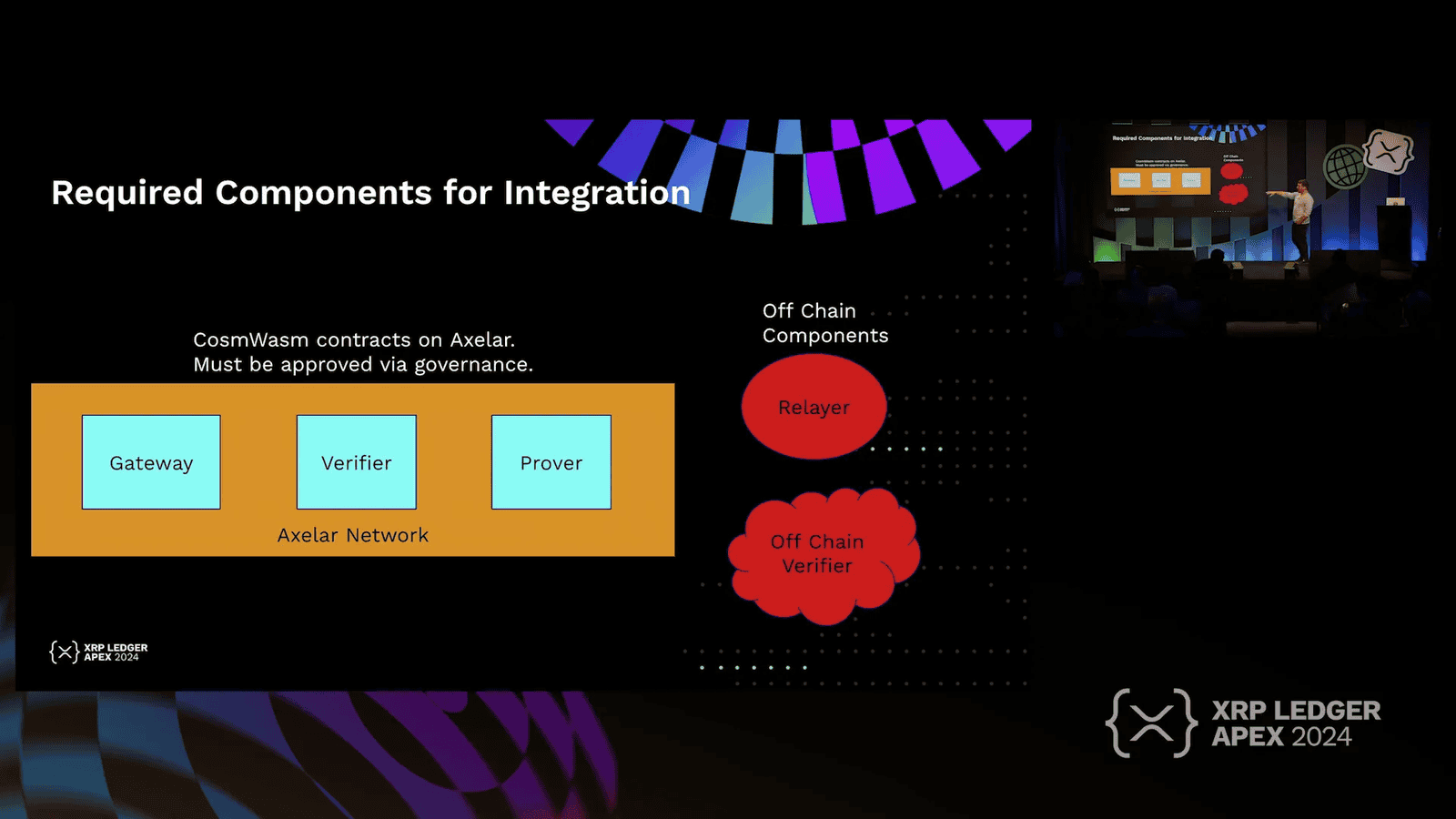
Utilizing Existing Relayers
Many existing relayers can be reused, simplifying the integration process. This efficiency allows developers to focus on creating robust smart contracts and verification methods without needing to build new relayers from scratch.
Off-Chain Verification Code
Additionally, off-chain components must be developed, such as the code that verifiers run to assess message validity. This may involve writing functions to look up transactions via RPC for the XRP Ledger, ensuring that the integration is seamless and efficient.
The XRP Ledger Integration Process
Integrating the XRP Ledger with the Axelar network is a unique process, primarily due to the absence of smart contracts on the XRP Ledger. Instead, the integration relies on a multisig account that serves as the gateway for transactions.
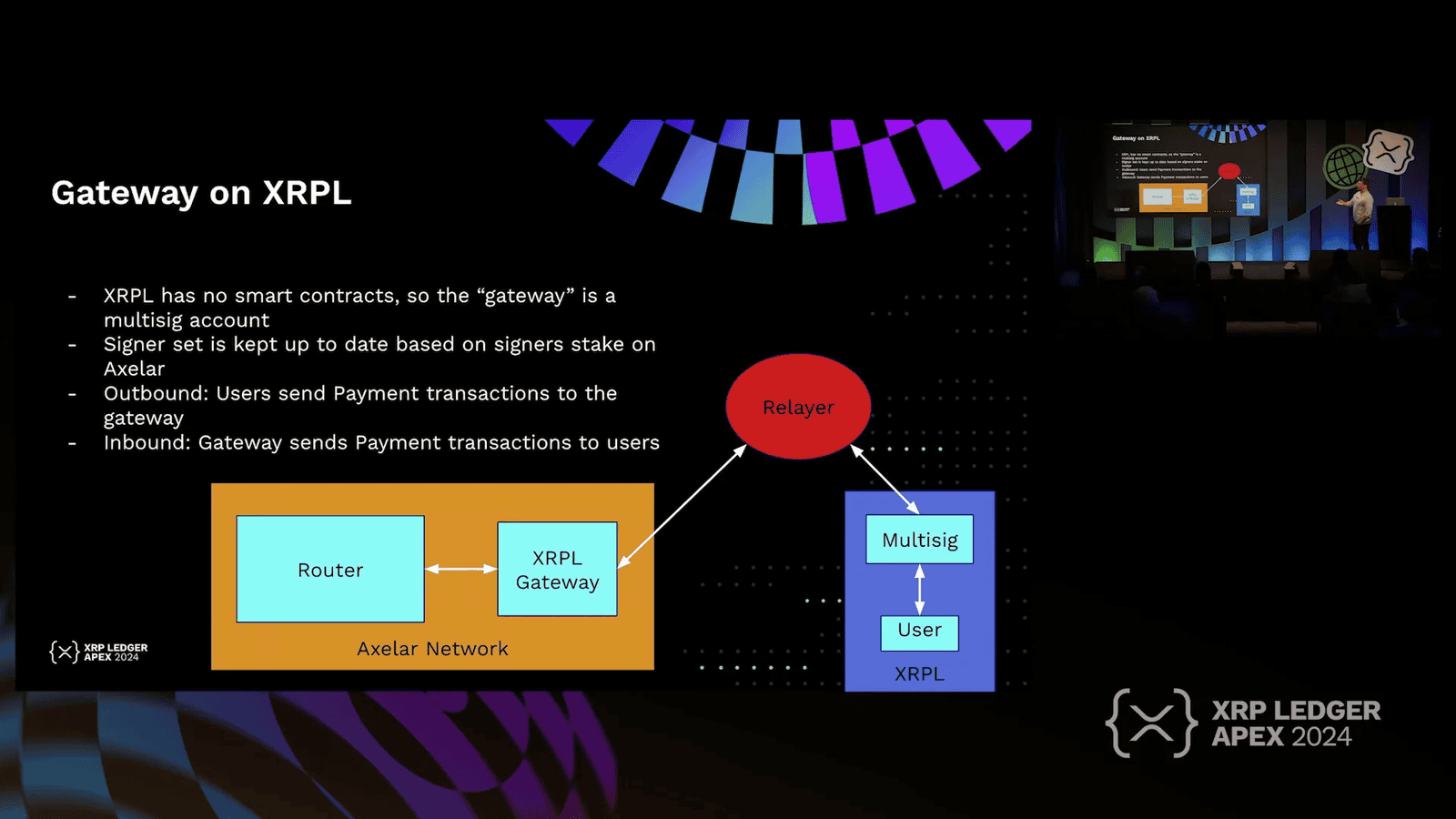
The gateway functions as a multisig account, with its signer set comprising verifiers from the Axelar network. These verifiers, who have staked Axelar tokens, are authorized through governance to ensure a secure and reliable transaction environment.
When a user initiates a transaction, they send a payment to the multisig account, which is then processed through the Axelar network. The incoming transactions are managed by this account, ensuring that the process remains seamless and efficient.
Standard Packet Structure
Every message transmitted through the Axelar network adheres to a standard packet structure. This uniformity is crucial for maintaining consistency, regardless of the verification method employed.
- Source Chain: The origin of the message.
- Source Address: The address from which the message is sent.
- Destination Chain: The intended blockchain for the message.
- Destination Address: The address on the destination chain.
- Payload Hash: A hash of the data being transmitted.
- ID: A unique identifier for the message, ensuring that each message is executed only once.
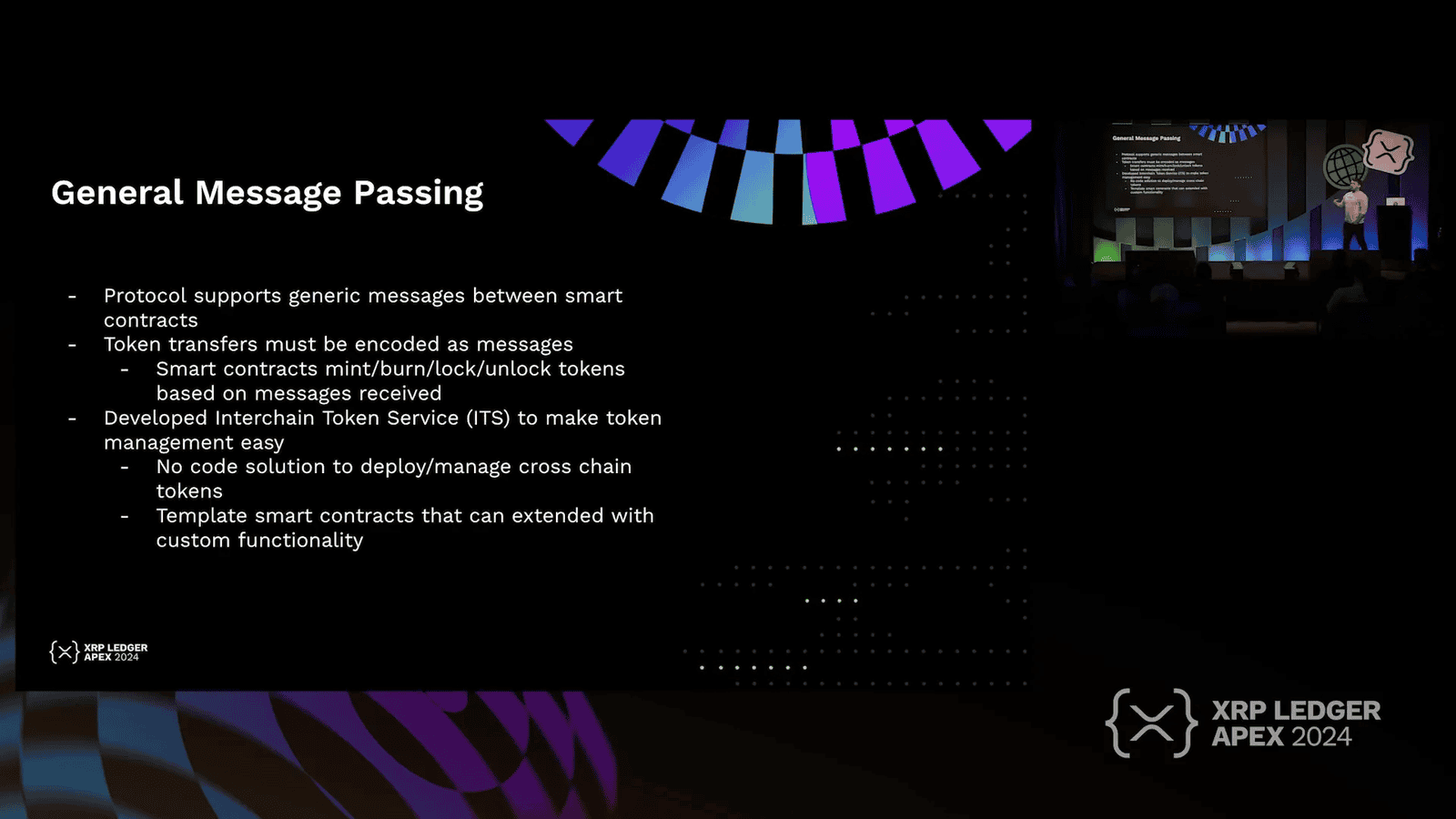
This standardization simplifies the integration process, allowing various systems, including web2 applications, to communicate effectively within the Axelar framework.
Handling Verifier Availability and Trust
In any blockchain interoperability solution, the trustworthiness and availability of verifiers are paramount. Axelar employs a proof-of-stake model to ensure that verifiers have a vested interest in maintaining the integrity of the network.

Why Trust the Verifiers?
Verifiers are required to stake a significant amount of Axelar tokens, which aligns their incentives with the network’s health. This staking mechanism not only provides a financial incentive for honest behavior but also introduces a risk of slashing for malicious actions.
Further, governance plays a crucial role in maintaining a decentralized network of verifiers. Only trusted entities, who are known and held accountable, can become verifiers. This structure greatly reduces the likelihood of collusion among verifiers.
Ensuring Verifier Availability
To address potential issues with verifier availability, Axelar employs mechanisms that ensure there are enough active verifiers at any given time. This redundancy is critical for maintaining the liveness of the network.
If a verifier fails to participate in voting or becomes unresponsive, governance can remove them from the verifier set, allowing new verifiers to step in. This dynamic ensures that the network remains robust and responsive to changes.

Preventing Spam in Message Relay
Spam prevention is essential in maintaining the efficiency and integrity of the Axelar network. Without proper mechanisms, malicious actors could flood the network with unnecessary messages, undermining its functionality.
Gas Fees as a Deterrent
One of the primary strategies for preventing spam is the implementation of gas fees. Relayers are required to pay a fee when relaying messages, which discourages the submission of invalid messages.
Optimizations by Verifiers
Verifiers also play a role in spam prevention. If they detect a high volume of suspicious messages, they can choose not to vote on those messages. This action effectively drops the messages from the network, preventing them from being processed further.
Additionally, the Axelar network is designed to refund users if they overpay for gas, ensuring that users are not penalized for legitimate transactions while still deterring spam.
Conclusion and Future Prospects
The integration of the XRP Ledger with the Axelar network represents a significant advancement in blockchain interoperability. By leveraging a flexible, programmable infrastructure, Axelar facilitates seamless communication between blockchains.
As the demand for interoperability continues to grow, Axelar’s model offers a robust solution that can adapt to emerging technologies and user needs. The future of blockchain lies in its ability to communicate effectively, and Axelar is at the forefront of this evolution.
FAQ
What is blockchain interoperability?
Blockchain interoperability refers to the ability of different blockchain networks to communicate and share information seamlessly. This allows for the movement of assets and data across multiple chains, enhancing the overall functionality of the blockchain ecosystem.
How does Axelar ensure security in cross-chain messaging?
Axelar employs a combination of verifiers, governance, and a proof-of-stake model to ensure security. Verifiers attest to the correctness of messages, while governance oversees the integrity of the verifier set.
What measures are in place to prevent spam on the Axelar network?
Spam is mitigated through the implementation of gas fees for relaying messages and the ability of verifiers to drop suspicious messages from the network. This ensures that only legitimate transactions are processed.
Can Axelar integrate with non-blockchain systems?
Yes, Axelar’s architecture is flexible enough to integrate with web2 systems, allowing for broader applications beyond just blockchain-to-blockchain communication.








